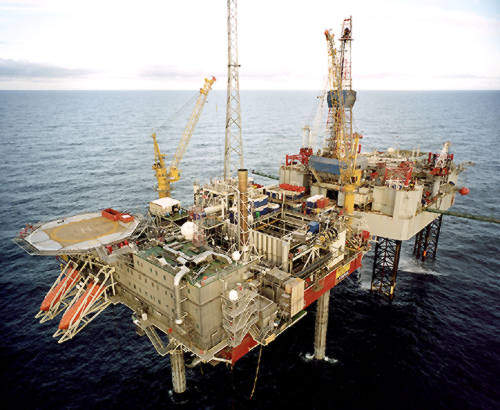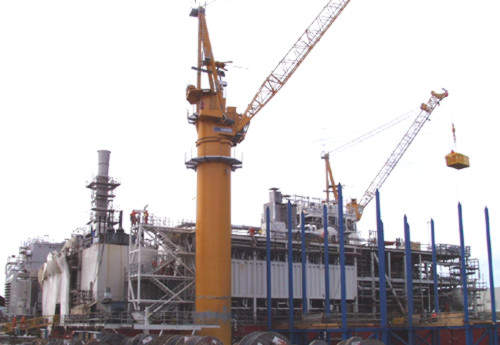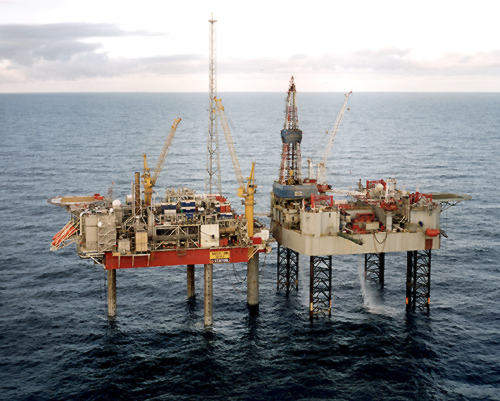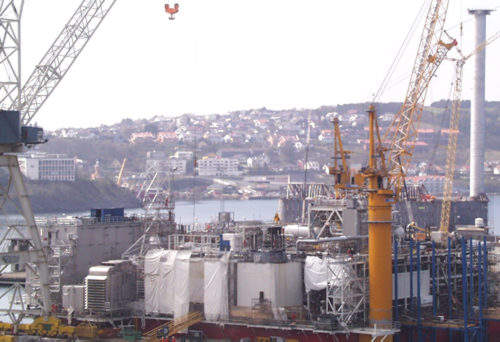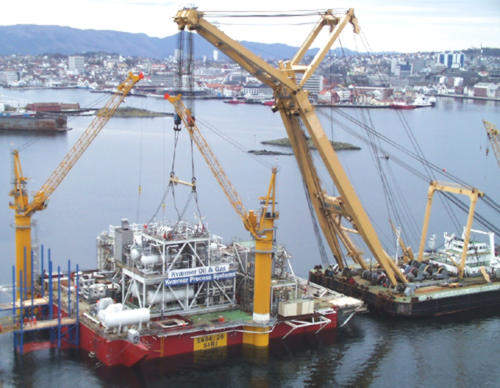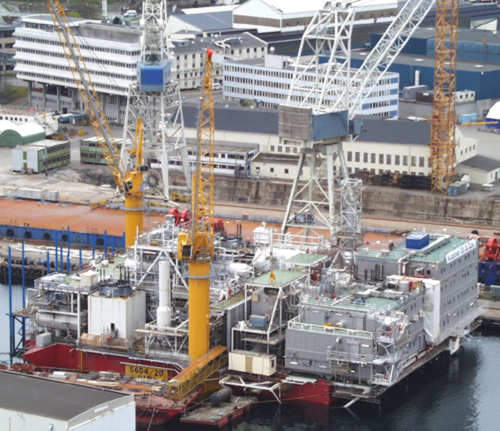Siri is located in block 5604 / 20 in the north-western part of the Danish sector of the North Sea, about 220km from the coast. The field lies at a depth of 2,070m in Palaeocene sandstone and has recoverable reserves of 60 million barrels.
Production on the Siri platform first started in 1999. The licence for the Siri field are owned by Dong Energy (50%), Altinex (20%) and Talisman (30%). The filed operator licence was taken over by Dong Energy from Statoil in 2002.
The originally planned life span of the Siri field was up to 2007, but Dong Energy expanded it to 2016. The company plans to further increase the span by another four years to 2020. Oil production at the field reached 15 million cubic metres by the end of August 2007.
Exploration in 1996
The initial exploration well was drilled in Siri Central at the end of 1995. This was followed by an appraisal well in August 1996, also in the central part of the structure. A third appraisal well was subsequently drilled on neighbouring Siri North.
Siri production
Production at the Siri Field stopped in August 2009 due to cracks in a subsea structure joined to the oil storage tank underneath the Siri platform. The damage occurred as the design of the grouting material applied to fix the caisson has failed.
To avoid further damage, Dong Energy came up with the temporary solution of connecting a drilling rig to the caisson in October 2009.
The drilling rig makes use of a lifting gear, which takes the weight off the caisson. Production resumed in January 2010.
Dong Energy, the licence operator of the Siri platform, reported a production share of 2.9 million barrels of oil from the field in 2008.
Development
In 1996, Kvaerner Oil and Gas (KOGAS) won the engineering, procurement, construction and installation (EPCI) contract for the fast-track field development strategy. This was based on a purpose-built, three-legged, fully integrated jack-up platform design, which contained wellheads, process equipment and living quarters. The platform stands on the top of a steel storage tank for oil, which has a capacity of 50,000m³.
The EPCI project cost for the Siri platform and offloading system (not including the drilling) is just above NKr2bn. The operational life of Siri is estimated to be at about ten years. This provides the design basis for the topsides equipment. Because the jack-up platform can be removed and re-used, the platform life has been set at 20 years.
Jacket details
The platform’s legs are 104m-long, have an outer diameter of 3.5m and weigh 800t each. Their wall thickness varies from 65mm to 110mm. They are composed of 390MPa steel.
The upper parts of the legs have 460mm diameter jacking holes spaced at 1,750mm. The legs stand in 13m-deep sleeves in the tank structure. In order to provide restraint between the tank and the legs, the gap between the legs and the sleeves is grouted.
The jacking system has a hydraulic ram pin-in-hole mechanism, with three jacking units placed around each leg. Each unit contains two hydraulic rams operating on a beam, which houses one jacking pin.
The three beams are welded together to form a ring. The upper stationary holding ring is connected to the top of the jack house, while a movable lower working ring is located around each leg.
Each leg was installed as a complete unit with piping located inside while the deck was afloat at the Rosenberg yard in Stavanger. Two floating shear-leg cranes were also used simultaneously for this operation.
Hull
The hull measures 50m x 60m and is 6.7m-high. The topsides equipment is enclosed in small 500t modules, while the hull contains diesel and water storage, electrical rooms, general storage, ventilation and communication rooms.
At the bow of the hull are two 12m-long fork structures, which are used for securing the wellhead tower structure. The forks are 1.4m-high and support the well manifolds.
The living quarters are cantilevered out 7m, on the opposite side of the platform. During normal operations, 21 people man the platform. The living quarters can accomodate 60 people in single cabins and who are ther to mainly cater for the maintenance and well work-over operations.
Tank and flare tower
The tank measures 50m x 66m and is 17.5m-high. It has an effective storage volume of 50,000m³. The base of the tank includes skirts of 1.6m and 2m in depth, which divide the underside of the tank into compartments.
Internally, the tank consists of a main tank and three separate buoyancy compartments, located around the leg sleeves. These are used to provide tilt and depth control during the lowering of the tank to the seabed. Stability was assisted by 5,000t of concrete ballast inserted in the bottom of the tank.
The tank was built by Daewoo in South Korea and transported to Stavanger on the heavy-lift vessel MS Swan.
The flare tower is located in one corner of the platform. Its 96m height is dictated by its closeness to the drilling rig.

